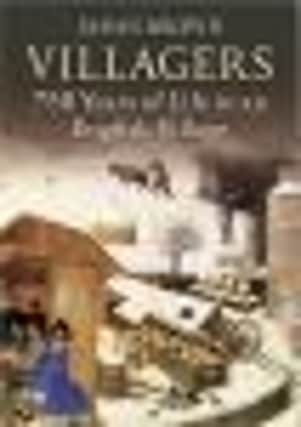Colourful characters come to life in book


Villagers is a new book by James Brown that brings 750 years of the history of Gamlingay vividly back to life.
Based on documentary evidence, the focus is firmly on the people who lived in Gamlingay, from the son of an alewife who became mayor of London to the pyromaniac miller who burned down Merton College’s windmill.
Advertisement
Hide AdAdvertisement
Hide AdJames spent 35 years researching the book but says it was a labour of love.
He explained: “I lived in Gamlingay for the first 19 years of my life and returned for six years in the early 1980s. I guess your home village gets in the blood.
“Like most village children of my generation I got to know every nook and cranny of the place while I was growing up.
“Most of my family still live in Gamlingay - parents, sister, aunts, uncles, cousins - and although I haven’t lived there for 25 years it still exerts a pull.
Advertisement
Hide AdAdvertisement
Hide Ad“I may have taken myself out of Gamlingay, but I can’t take the village out of me.”
The idea for the book came about when James came across a mention of Gamlingay whilst in the history section of the Central Library in Newcastle upon Tyne one afternoon in 1975.
He said: “I can’t recall what it was about, but I started hunting for other references to ‘my’ village and soon had a handful of photocopies. It just snowballed from there.
“Doing the research was like trying to complete a cryptic crossword with half the clues missing, plus a lot of detective work with a dash of imagination thrown in.
Advertisement
Hide AdAdvertisement
Hide Ad“Soon after I started I began to ask myself where the ordinary villagers had gone. They were not represented in the published information, which was mostly boring stuff about who owned this knight’s fee or that manor or had the right to the income from the church.
“I found the real villagers eventually, and with their discovery came the realisation that the kind of local history that interested me was mainly about people – real people, the ordinary folk who had lived and loved and died in Gamlingay over the centuries. Go back a couple of hundred years and most of us are descended from villagers like them.”
Researching proved a challenge as James soon discovered that most documents before 1500 were written in Latin – a language he did not know – and featured a lot of shorthand notes.
He added: “It’s a bit like panning for gold – you live in hope of finding a nugget every now and again.
Advertisement
Hide AdAdvertisement
Hide Ad“Sometimes you are just gob-smacked, as I was when I found a reference to a wife-sale in 1582. Elizabeth Bowers, her husband and the chap who purchased her were all excommunicated. She fetched 16 shillings, which was about the cost of a second-rate horse at the time.”
But while he may turn his handn to more writing in the future, James, who now lives in Suffolk, says he won’t be trying to document any more villages.
He said: “I don’t think I could attempt the same thing for anywhere else. Even if the evidence was there, I haven’t got the time left to do it!
“Like most writers I have half-finished manuscripts lying in drawers and ideas for several more books. Time will tell whether they come to fruition. I’ve had a lifelong passion for aviation, so maybe something about flying.”
To find out more about the book, visit http://gamlingayvillagers.co.uk/